15 Ways To Add More Flavor To Store-Bought Salsa
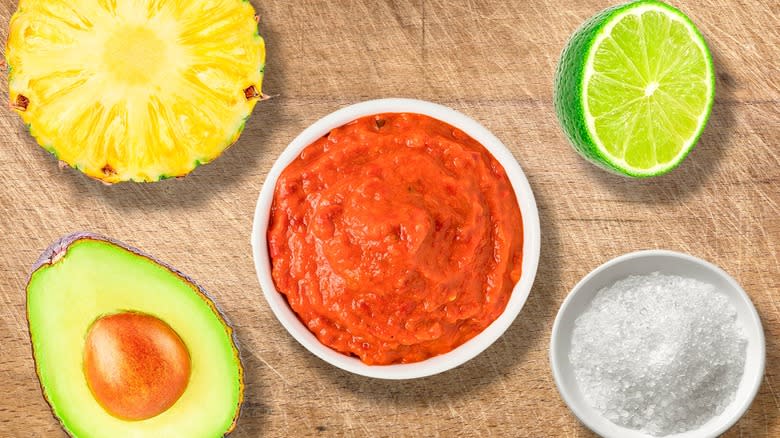
If you're not in the mood to whip up your own salsa or need something in a jiffy, there are loads of salsas available at the store. There are chunky, mild, spicy, green, red, and many other options to choose from, so you can easily find one to pair with your next meal or snack session. No matter what type of salsa you buy from the store, there are a lot of ways to give it more seasoning, texture, color, and intrigue. Whether you want to balance out the taste with lime juice or pump up the heat with chilis, there are plenty of simple ways to add more oomph to packaged salsa.
Bring your revitalized salsa to a potluck, serve it with chips for a family appetizer, or enjoy it on top of your next meal. These quick tips can elevate your ready-made salsa to seem homemade without having to buy a bunch of fresh produce to make it from scratch. From vinegar and salt to honey, you likely have most of these ingredients to level up the condiment at home already. We do have a few suggestions encompassing fresh ingredients, such as fruit or herbs, but you may follow any tip that works for you and the ingredients you have on hand. Find a tweak or two to enhance any jarred or store-bought salsa.
Read more: Hacks That Will Make Boiling Your Eggs So Much Easier
Try Using Canned Fire-Roasted Tomatoes
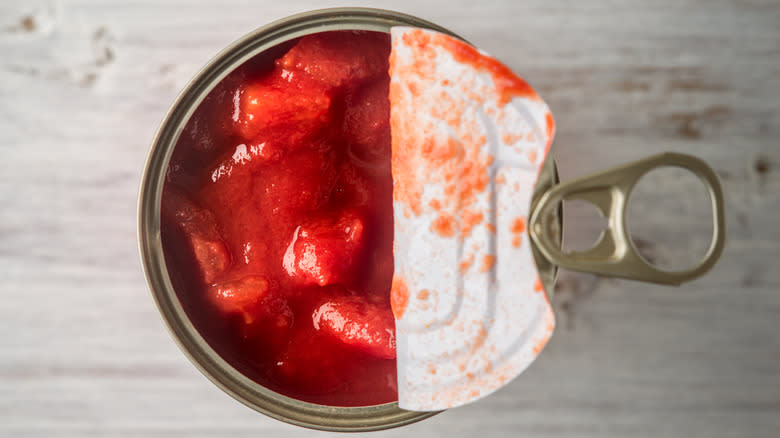
If you not only want to add tomatoes to your salsa but also give it a kick of flavor, try a can of fire-roasted tomatoes. This elevated version of tomatoes could easily be added to something like chili or pasta sauce, but especially salsa. Fire-roasted salsa has a smokiness to give the condiment some depth that it otherwise wouldn't have. The tomatoes also sport cool black flecks, making them look charred as if you grilled them.
Leave it chunky as it comes from the can, or give it a rough chop to match the texture of your salsa. If you prefer it to be completely smooth, place it in a blender or food processor. These already come roasted, so you don't have to wait by the grill with tongs to move around your tomatoes and get them nicely grilled. This has a delicious smokiness that could go well with chipotle powder or smoked paprika if you're looking to add an extra smoked element to the salsa.
Load Up Store-Bought Salsa With Black Beans
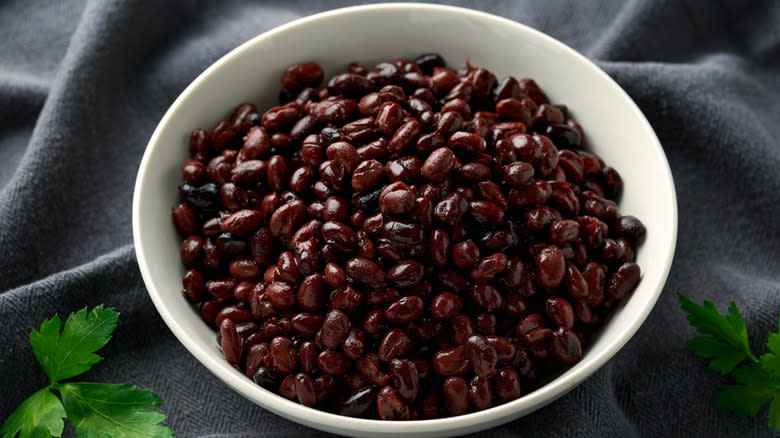
While not all salsas have beans, adding them into the mix can give it a welcome texture and boost of protein. Opt for black beans or pinto rather than something like cannellini beans. Whether you're using salted canned black beans or homemade beans with garlic, onion, and cilantro, they can offer flavor to the salsa. Keep this in mind, particularly when it comes to sodium, as you don't want to double up on the salt if it's in the beans and salsa. Rinse canned beans or use a low-sodium version to eliminate any oversalted issues.
We recommend keeping the beans whole unless you're doing a blended salsa, in which case you can put the salsa and beans in the blender together. You don't necessarily want to use refried beans in your salsa since it will be a mismatch in textures — a strange combination of smooth beans and chunky tomatoes. Use whole beans to give a nice pop to your salsa, which you can add to burritos or tacos or just dig into with chips.
Brighten Up Store-Bought Salsa With Colorful Fruit
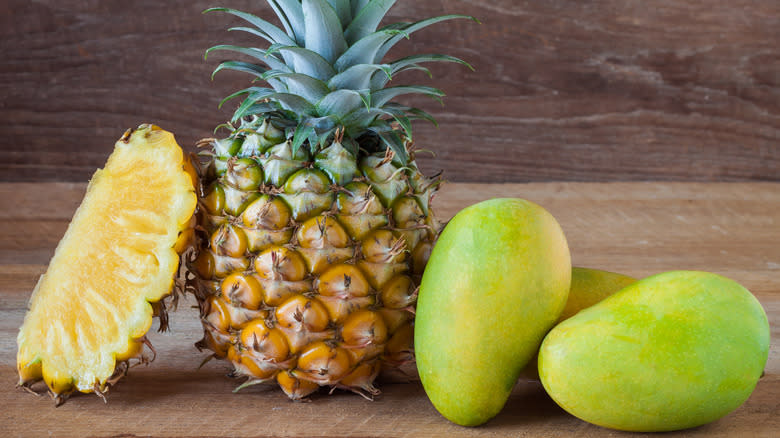
Pineapple, mango, or grapefruit make a magnificent addition to salsa when you want to give it a colorful bang. Fruit is not only brightening but gives a completely new textural element that can break up a store-bought salsa. This works particularly effectively with a chunky salsa since the larger pieces of tomato, onion, and other ingredients can work well with the pieces of fruit. To mimic the size of your salsa, chop up the fruit because you don't necessarily want large wedges of pineapple or huge fruit chunks if it mismatches your salsa.
For a pineapple salsa, chop fresh pineapple to refresh store-bought salsa with a sweet and tart balance. Meanwhile, a juicy grapefruit can provide an acidity that you can use in conjunction with lime, and it also has a soft burst of flavor when you bite into it. On the other hand, freshly chopped mangoes or strawberries have a sweetness that goes well with a spicy tomato salsa for a sugary and hot combination.
Squeeze In A Lime Or Lemon
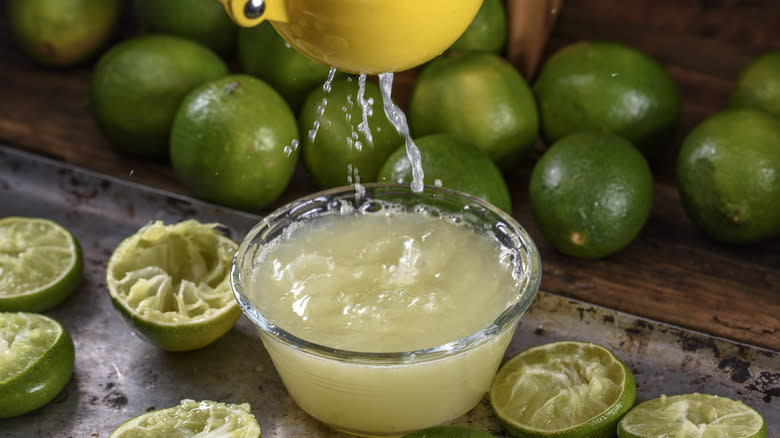
Lime is an imperative part of salsa; it's in just about any recipe. It's one of the key ingredients in homemade salsas, along with tomato, onion, garlic, cilantro, and salt. You might find that your ready-made salsa needs a hint of acidity or the freshness that lime brings. Many store-bought salsas have vinegar rather than lime, so adding a bit of citrus can bring it to life and give it that homemade taste that it otherwise wouldn't have.
Freshly squeezed lime juice will brighten even the most bland salsas, but you could certainly do lemon juice for that acidic punch. This quick addition can energize your store-bought salsa without having to do anything other than slicing a lime in half and squeezing it into the salsa. Consider adding half a lime to start, then more if the salsa is still missing something. You could use the premade lime juice in a container, but fresh has the most potency and vibrancy. Just take out the seeds because you don't want to accidentally bite into one of them. This is a great inclusion to dishes like grilled fish, fish tacos, or ceviche.
Bring Up The Heat With Chilis
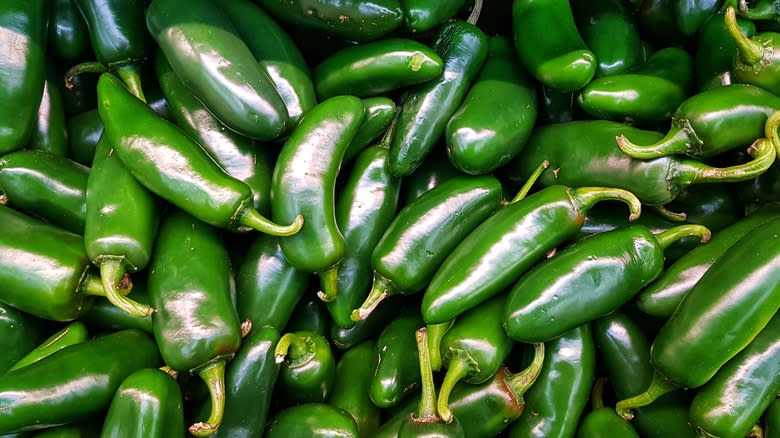
Whether you have a jar of mild salsa in your cabinet that you want to use up, or you purchased a spicy salsa but feel it still needs heat, adding different types of chilis can make a big difference in the spice level. You can customize the heat by using something with a low Scoville spice scale like a Padron chile or seeded jalapeño, but you could move up on the scale with serrano, habanero, or simply integrate more chilis into the mix. It's also a beautiful way to add a sprinkle of color to your salsa. Salsa has color from tomatoes, but the bright red from a ripe jalapeño has a visually compelling factor.
Chop your chilis up finely so they can seamlessly integrate into the salsa and avoid having a big hunk of pepper in your mouth. If you're not too sure how spicy you want your salsa to be, start small, taste it, and then add more if need be. It's hard to pick out the little pieces or undo the spiciness once they're mixed into the salsa. Sometimes, all you need is the pepper or seed to come in contact with your food, and it's already spicy, so start with less and then build up.
Don't Skimp On The Fresh Herbs
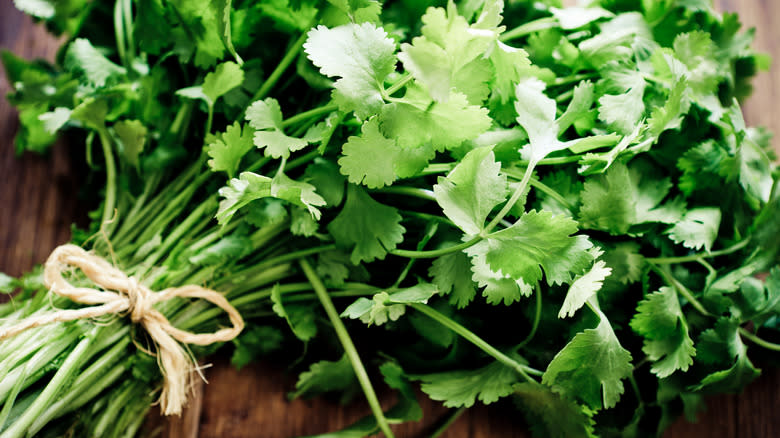
We adore adding fresh herbs to many dishes. Store-bought salsa could get an upgrade with some fresh herbs, such as cilantro, parsley, or mint, depending on the other ingredients and what you'd ultimately like to pair it with. Cilantro is a clear front-runner as far as herbs to add. It's a popular choice in many salsa recipes, but it can make your ready-made salsa look more homemade and fresh, considering a canned or jarred version wouldn't have dynamic, bright green, fresh cilantro. If it did have cilantro, it would look a little darker simply because it was not freshly added.
Do a rough chop so it looks more homemade. If you want something a little more on the refreshing side, try chopped mint. This can go well with chicken dishes, lamb, or when you want something on the lighter side. The pieces of fresh mint will have a cooling effect once they hit the tongue. For the brightest color possible, soak herbs in ice water before putting them in your salsa.
Mix Something Sweet Into Store-Bought Salsa
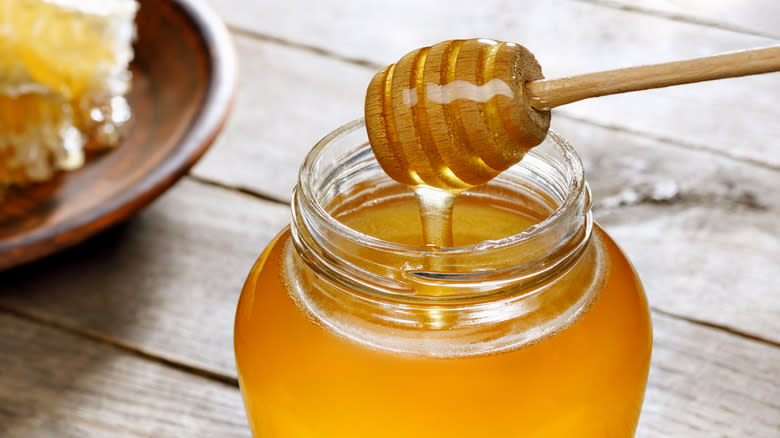
If you've ever had packaged salsa that feels like it's missing something, you might want to think about sprinkling in a sweet element. Whether you opt for sugar, honey, or agave, it can round out the salsa for the better. Some salsa recipes contain sugar to sweeten the bitterness of other ingredients, like tomatoes or vinegar. Don't add too much at a time, as you might be stuck with sugar granules.
Start with a small amount and get it thoroughly mixed to avoid clumps of sugar or noticeable bits. Honey and agave might blend a little easier and go deliciously with certain ingredients. Honey is a game-changing ingredient for a fire-roasted salsa since the sweetness melds with the smoky element. You could also use hot honey to give a sweet and spicy note to the salsa. Who doesn't enjoy a two-for-one element? A dark agave can offer a light caramel taste, while a light version is milder. A hint of sweetness can give equilibrium to the salsa when needed.
When In Doubt, Chop Up More Onions For Store-Bought Salsa

Fresh onion plays a huge part in salsa, not only for the taste but for the crispy, satisfying crunch. While white onion may be the best type of onion to use in traditional Mexican salsa, you could also use red onion or even scallions to intensify store-bought salsa. This can give it a punch of flavor since it's hard to know how long all the ingredients in the store-bought salsa have been in there, whereas when added in fresh, you can jazz up the salsa with a crunchy, colorful element.
White onions are one of the milder onions compared to red or yellow onions, which may be an alluring quality if you don't want it to overpower the salsa. You could use scallions in any salsa, but it's a perfect color match for salsa verde with tomatillos, jalapeños, and cilantro. They're peppery and a teensy bit spicy to work with any chilis or spicy element. Give your onion of choice a good dice or a rough chop and mix it into the salsa.
Add In Fresh Avocado To Store-Bought Salsa
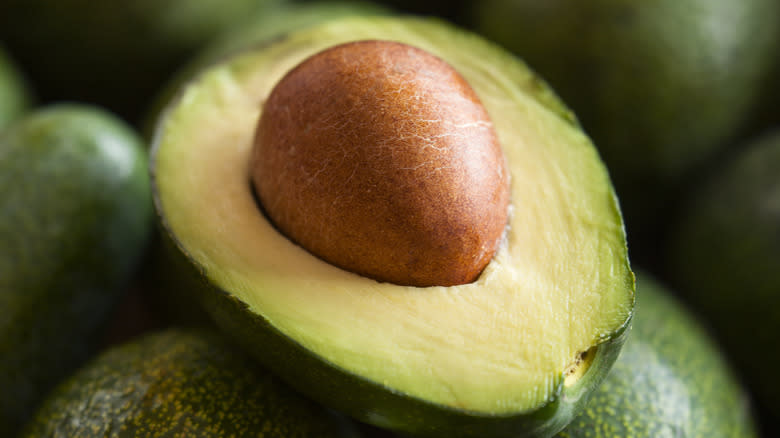
Avocado is one of the simplest ways to add more flavor to store-bought salsa. Just chop them and chuck them in the salsa. That's it. It's a beautiful green addition to a salsa that might otherwise be dull in color. This could be a great choice to add to a salsa that has other color elements, such as yellow corn. It's particularly good with a thick-and-chunky-style salsa because the pieces of avocado might be a little funky if it's a blended salsa. Cut the avocado into decent-sized chunks that won't get mushed during the mixing process.
Extra avocado could also be added to creamy salsa verde or an avocado-based salsa. Mix in more avocado chunks or mash it so it's smooth or has the texture of guacamole. Avocados have some great versatility based on the store-bought version that you're trying to work with. Guacamole salsa tends to be creamy, so blend it with avocado for further richness. Avocado salsa has a freshness that makes it an enticing option to bring to a gathering.
Integrate A Blend Of Bell Peppers
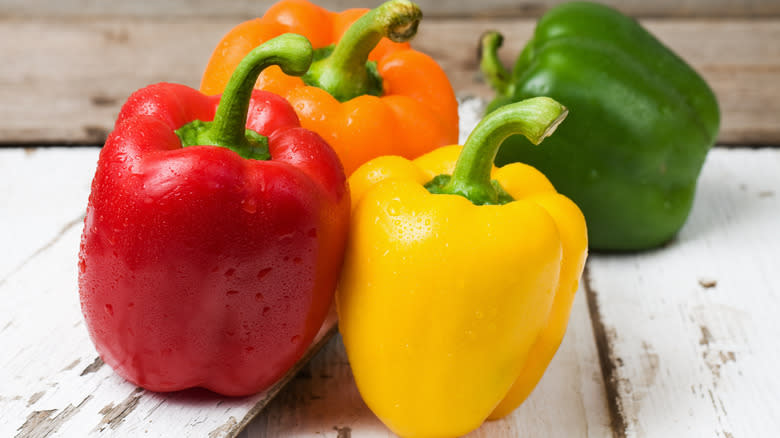
Add remarkable color and a welcome crispness to your salsa with fresh bell peppers. You should use a blend of peppers since they not only have different hues but various flavor profiles that can add a delightful complexity and nuance. As red bell peppers have a hint of sweetness while the greens can be more on the bitter side, a range of peppers can add dimension and versatility to store-bought salsa. It's also a great way to include more veggies to a meal with little effort, but you should use fresh bell peppers since frozen types tend to be soggy rather than crisp. We want the bell peppers to give a nice crunch to make an interesting salsa.
Start by chopping them into sizes of your preference, though you want the size to be similar to other ingredients in your store-bought salsa. For example, cut larger chunks if you have a thicker salsa. If you're feeling extra creative, you can cut a bell pepper in half, remove any seeds, and pour the salsa into it to act as a serving bowl.
Drop A Little Bit Of Vinegar Into Your Salsa
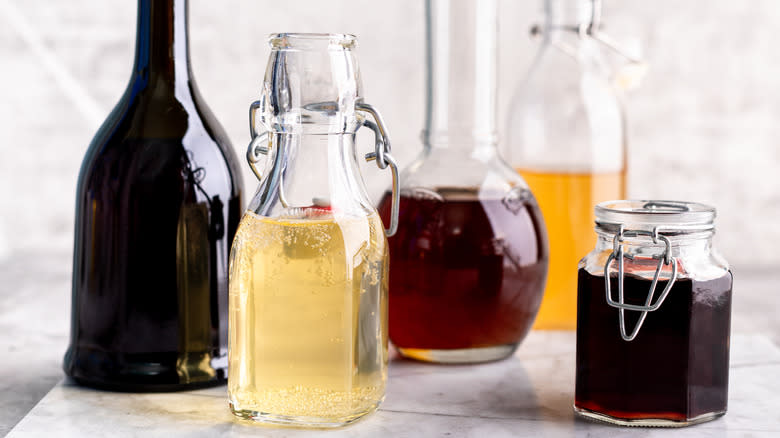
If you haven't added vinegar to your salsa, it might be time to do so. Unlike apple cider vinegar or rice vinegar, which are overpowering ingredients you should skip for salsa, a basic white vinegar can bring a welcome acidic component. White vinegar can balance out the flavors of the salsa, especially if you find your salsa is a little on the sweet side. A dash of vinegar can cut through the sweetness to mellow it out.
Keep it basic and simple with classic white vinegar. You don't need to use anything fancy, such as champagne vinegar, which can alter your salsa to negatively take over. Less is more. Just add a small amount and taste your salsa. You can't take this back if you add too much since it can have a tartness. This adds a tasty twist to a salsa that's perfect to eat as a tangy supplement to grilled meats or fish. Check the ingredients of the store-bought salsa to see if there's vinegar, but in many cases, you could add more.
Sprinkle A Bit Of Salt Into Store-Bought Salsa
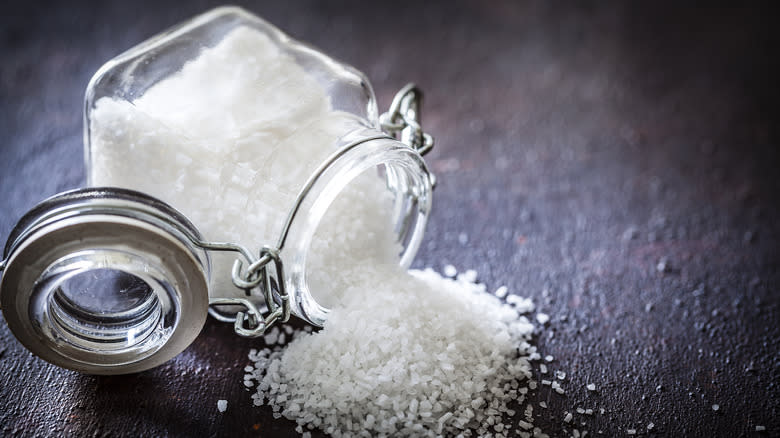
From pasta to mashed potatoes, salt is often the answer to bettering the flavor of food. You might want to check the back of your salsa container to see what the salt content looks like if something tastes amiss. If the levels are low or you feel it needs more sodium, try adding a bit of salt. While you don't want to overpower the salsa with sodium, it can be a great addition if you're trying to balance out other components, such as the acidity of lime.
The salt can bring out the natural flavors of the ingredients. For nuanced flavor, you could do flavored salts, such as smoked salt for smokiness, habanero salt for an extra jolt of heat, or even lime salt. There are many cool options out there, so don't be afraid to experiment as long as it goes with the flavor profiles of your salsa. You might not want to add lavender salt to tomato salsa. But garlic salt or chipotle salt can be an appreciated inclusion.
Elevate Store-Bought Salsa With A Pickled Element
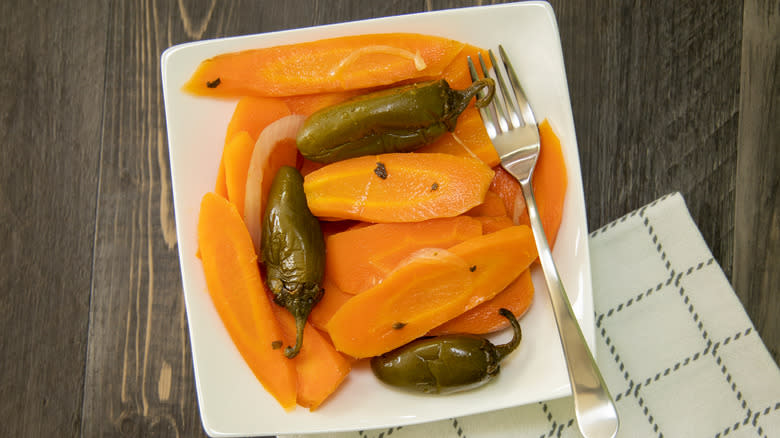
From carrots to radishes, there are many pickled elements to integrate into a salsa to give it an upgrade. Much like adding lime or vinegar for acidity, the pickled element can bring on that additional component while adding both color and texture. This works when you want to add a contrast to your store-bought salsa or if you're trying to enhance a mild salsa without adding a spicy element.
Tangy ingredients like pickled corn, red onion, or garlic can turn store-bought salsa into something sublime. Adding pickled veggies like diced pickled jalapeños or pickled radishes can give both spiciness and crunch into the mix. But you don't have to stop there. Dill pickles add a zesty flavor to pico de gallo and work in harmony with the larger chunks of vegetables, adding a briny element without taking over the whole salsa. Chopped pickle spears are slightly soft, whereas cornichons are smaller and a little bit crunchier. Buy jarred pickled vegetables at the store when you need a way to add more flavor to store-bought salsa in a jiffy, but if you plan ahead, make them yourself and store leftovers in the fridge.
Give The Salsa Time To Marinate
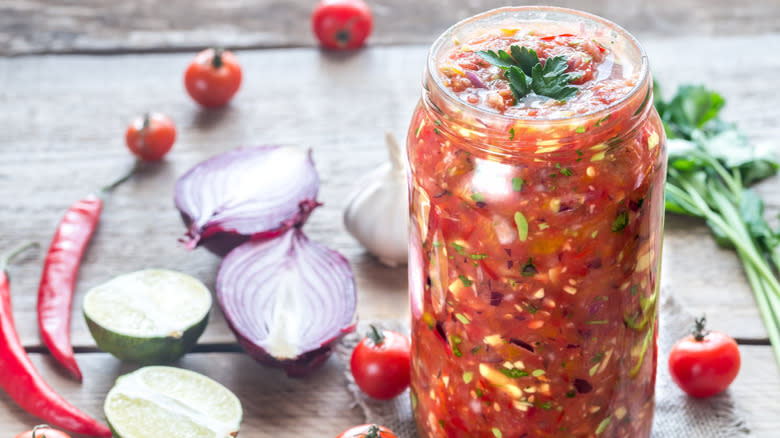
You've upgraded your salsa with a couple of captivating ingredients, and now you're ready to dig in and get the party started. Hold the brakes for a second. We recommend giving your salsa time to marinate; it doesn't have to be hours long or overnight by any means -- 30 minutes is enough. Whether you added some more tomatoes, onions, a pickled element, or vinegar, it helps when you allow the ingredients time to sit and work together.
If this tip applies to the best homemade salsa, it certainly applies if you include fresh components in store-bought salsa. Say you chopped up fresh onion to put in your favorite ready-made salsa; immediately serving it might be a bit jarring when the onion is so crisp in comparison to the rest of your salsa. When you allocate time for the flavors to mingle, it might soften a bit and absorb some of the juices and seasoning to make it even more enjoyable. As a bonus, you might want to consider giving it time to get to room temperature.
Toast Or Char Any Additional Ingredients
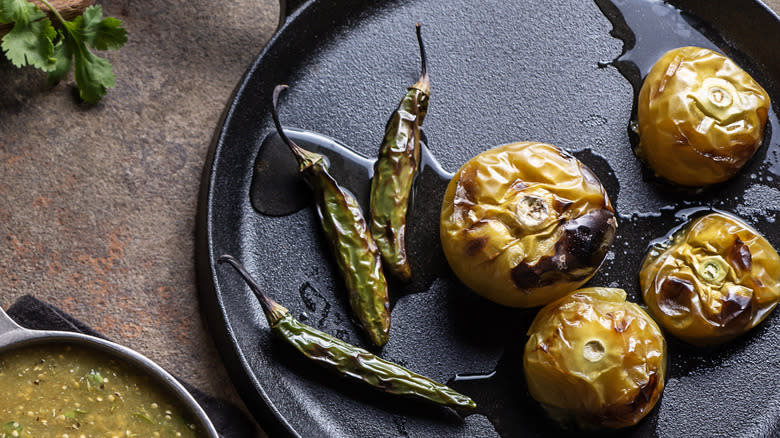
No matter what you choose to add to your salsa, grilling or roasting those ingredients to get a charred effect can give store-bought salsa a facelift with a rustic quality. Many homemade salsas call for roasted additions, be it tomato, garlic, or onion, so you can bring this element into a store-bought version. If you're adding extra tomato, chilis, or peanuts for salsa de cacahuate, consider roasting them on a pan or grill for a smoky flavor.
The same concept can be applied when integrating any spices or seeds. Try toasting your spices, like toasted peppercorns or cumin, briefly on a pan to unlock an understated flavor. Then grind them up in a mortar and pestle or blend in a food processor to put into your salsa. From sesame seeds to chipotle powder to jalapeños, charring veggies or toasting spices will give any store-bought salsa a deeper flavor. This method enhances the natural flavors of your ingredients that will impress your guests. Don't look away during the roasting or toasting process, particularly for smaller ingredients like pepitas, since you don't want the items to get burnt.
Read the original article on Tasting Table.

